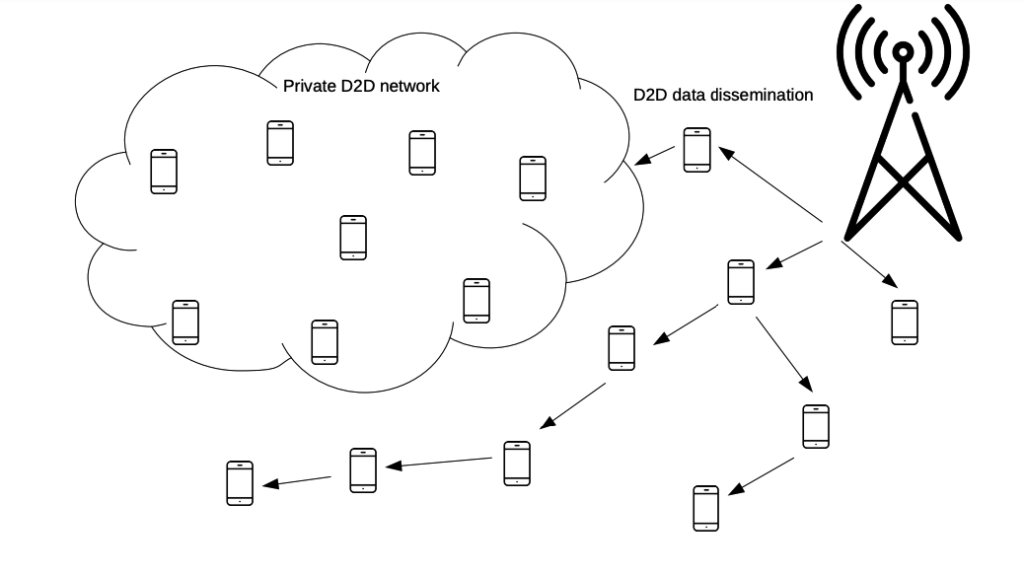The new 5th generation of cellular networks (5G) has gained prominence in recent years within mobile networks. This is mainly due to the increasing demand for network traffic as more and more devices are integrated into the network. In addition, the demand for higher data rates and quality of service (QoS) is increasing, along with the need to access data anytime, anywhere from any device, making 5G an answer to these needs.
Among the functionalities offered by 5G, we find device-to-device communications (D2D), which is a direct link between two cellular devices, relays to the 5G core. Moreover, it works in both internal and external ISM bands. As a result, 5G can work with other communication technologies such as Zigbee, Bluetooth, and WiFi. This allows the integration of many functionalities, such as the generation of local networks between devices, which can be used as an alternative communication channel and thus reduce base station traffic.
An example of this is the distribution of high-priority messages in overloaded networks. Furthermore, in catastrophic situations, such as natural disasters or wars, telecommunications infrastructures may even be rendered unusable, making communication distribution impossible in some sectors. In response, D2D can generate a wireless cluster interconnected with nearby devices to enable the rapid dissemination of emergency messages, thus covering as many users as possible.
Another possible way to exploit D2D communication networks is by creating private networks, in which one or more users can mediate to add external users to their network. This allows for autonomy of communication methods for current broadcast infrastructures and provides privacy due to the hermeticity offered by these internal networks.
In essence, thanks to the scalability of D2D within 5G, network functionalities can be extended at different levels, incorporating new use cases and applications to new markets within mobile networks.

